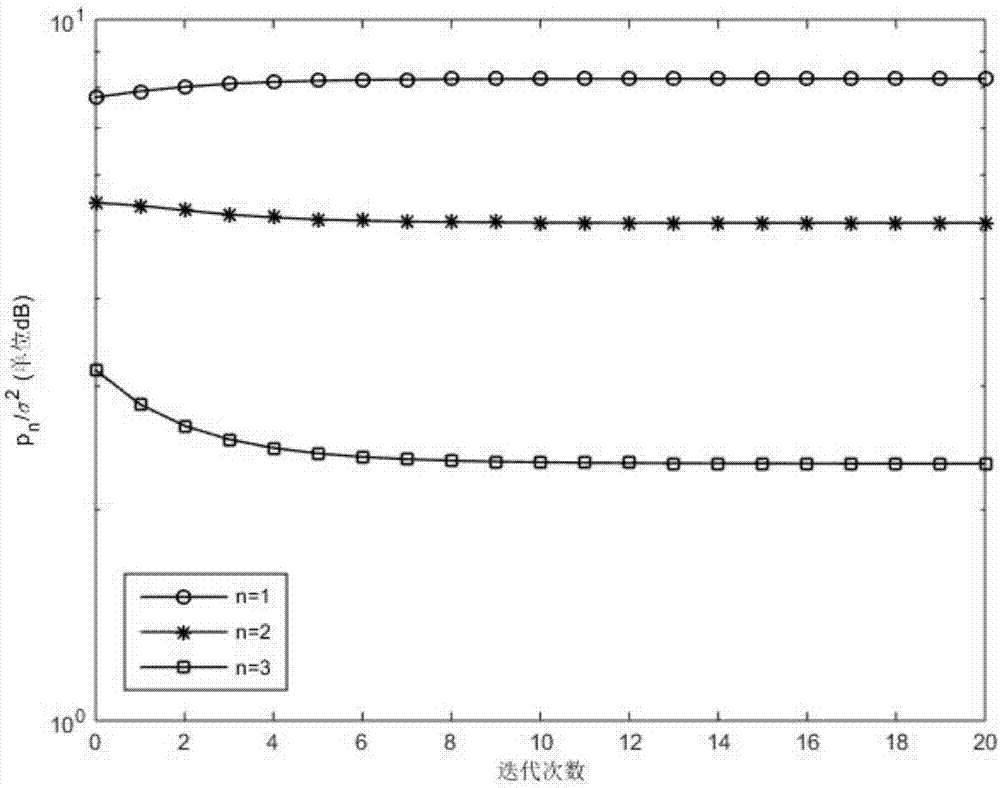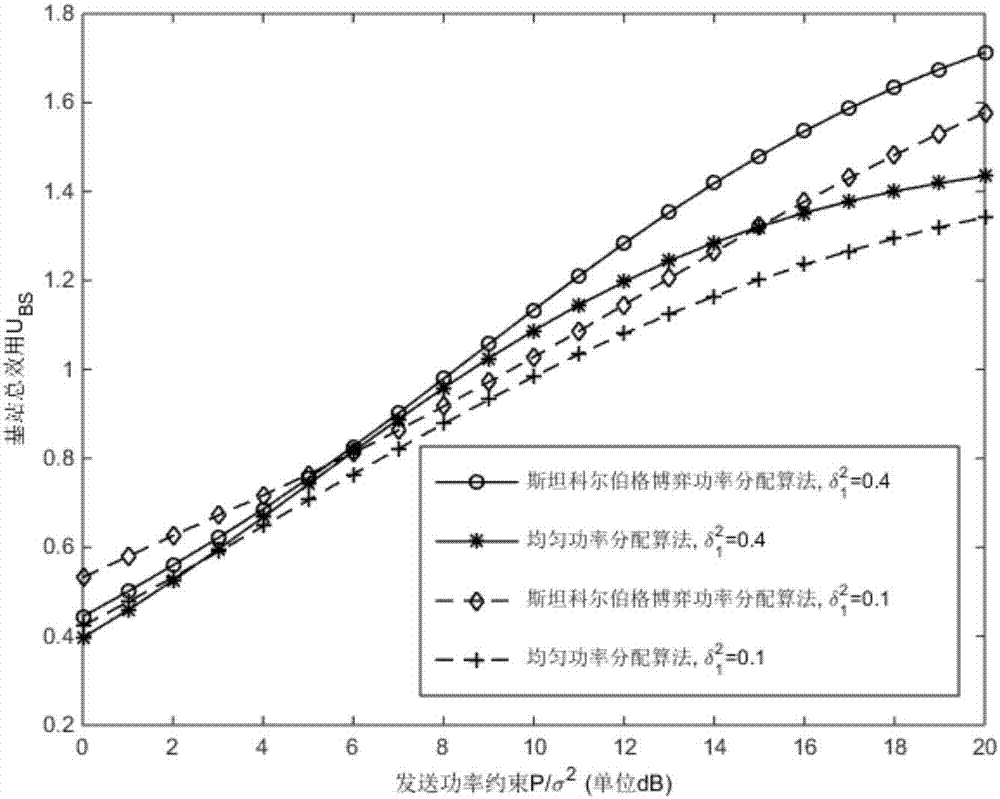Power distribution method for non-orthogonal multiple access system
A non-orthogonal multiple access and access system technology, which is applied in the field of power allocation of non-orthogonal multiple access systems, can solve the problems of impairing the communication performance of weak users and not considering the fairness of resource allocation of each user in the communication system, etc. , to maximize the utility
- Summary
- Abstract
- Description
- Claims
- Application Information
AI Technical Summary
Problems solved by technology
Method used
Image
Examples
Embodiment 1
[0031] The applicable communication system model of the present invention is made up of a single-antenna base station and N single-antenna receiving users; The channel response from the base station to the nth user is expressed as h n ,in It is assumed that the base station can fully know the channel state information (Channel State Information, CSI) of the entire network system; therefore, the base station can properly allocate its transmission power to improve the communication performance of the communication system; without loss of generality, it is assumed that the communication between the base station and each user The channel response satisfies the inequality |h 1 |≤|h 2 |≤…≤|h N |.
[0032] According to the non-orthogonal multiple access (NOMA) technology protocol, the sending end adopts superposition coding technology, so the received signal of the nth user can be expressed as:
[0033]
[0034] where p n Indicates the transmit power allocated by the base st...
Embodiment 2
[0106] The effect of the present invention can be further illustrated by the following simulation experiment results, and the basic process of the simulation experiment is with reference to Figure 4 .
[0107] for figure 1 , set the number of users in the system to N=3. The channel response from the base station to each user has a mean of 0 and a variance of The independent and identically distributed complex Gaussian random variable of , and the total transmit power of the base station is P / σ 2 = 20dB.
[0108] for figure 2 and image 3 , set the number of users in the system to N=2. channel variance for strong users Weak user channel variance is set to and
[0109] (6) Simulation analysis and results
[0110] figure 1 is the convergence process diagram of the iterative algorithm in the present invention under the condition of given transmission power. From the simulation results, it can be seen intuitively that the algorithm can quickly converge to a stabl...
PUM
 Login to View More
Login to View More Abstract
Description
Claims
Application Information
 Login to View More
Login to View More - R&D
- Intellectual Property
- Life Sciences
- Materials
- Tech Scout
- Unparalleled Data Quality
- Higher Quality Content
- 60% Fewer Hallucinations
Browse by: Latest US Patents, China's latest patents, Technical Efficacy Thesaurus, Application Domain, Technology Topic, Popular Technical Reports.
© 2025 PatSnap. All rights reserved.Legal|Privacy policy|Modern Slavery Act Transparency Statement|Sitemap|About US| Contact US: help@patsnap.com



